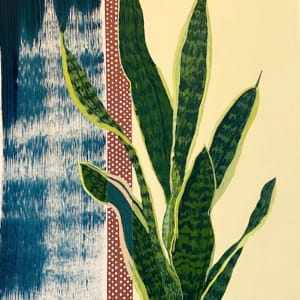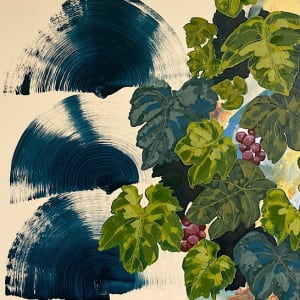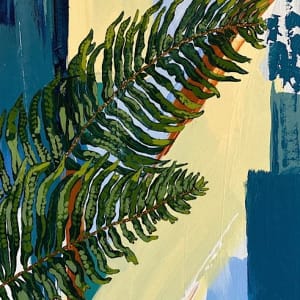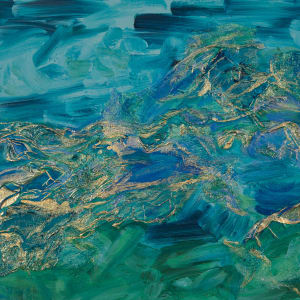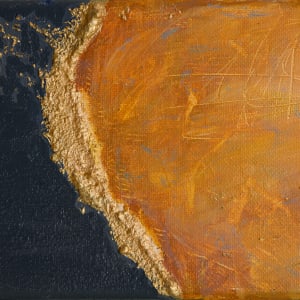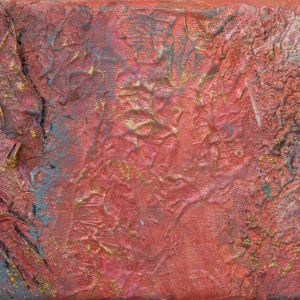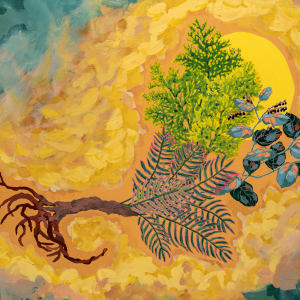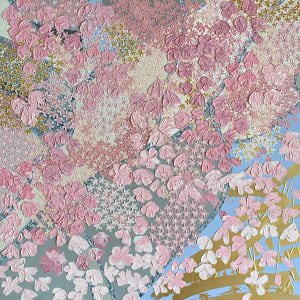Cyanotype and Painting on Canvas
Botanical cyanotypes on silk-cotton fabric are sewn onto raw canvas. The image is completed with earthy acrylics. Together, the cool cyanotype and warm painting give an overall effect of opposites in balance. Negative and positive, night and day, winter and summer, hidden essence and the seen. The combination remarks on everyday strength amid continual change. Intentional empty space preserves clean lines, offering a tranquil experience that unites memory with the present moment. Tactile and colorful, yet minimalist.



Cyanotype Scarves
Original botanical prints on rectangular and square scarves. Available in two weights of silk or organic cotton.
Read more about the process here: https://www.nanettemoss.com/blog/cyanotype-silk-scarves
Cyanotype on Paper
Original botanical prints on watercolor and teabag paper, mounted on birch panel or float framed without glass.
Read about the inspiration and process in my blog post "The Alchemy of Cyanotype": https://www.nanettemoss.com/blog/the-alchemy-of-cyanotype
Flora and Bone
Ongoing series using found bone, mixed media, and acrylic to create imagery of the natural world. My intention is to show the connection of all things, from the standpoint of hope. Matter changes form, yet life continues.
Read the origin story here: https://www.nanettemoss.com/blog/sakura


Wabi Sabi Plants
Inspired by lore and practical uses across cultures and millennia, these seven original paintings represent the gifts of plants. The abstract backgrounds are linked by a rich palette of earth tones, deep teal and white. Together with green, these colors invite warmth and life into your home. Broken petals and dry leaves are embraced as part of the natural process of time. Wisdom requires a bit of weathering.
Read "Lore and Uses of the Wabi Sabi Plants" here: https://www.nanettemoss.com/blog/lore-and-uses-of-the-wabi-sabi-plants









